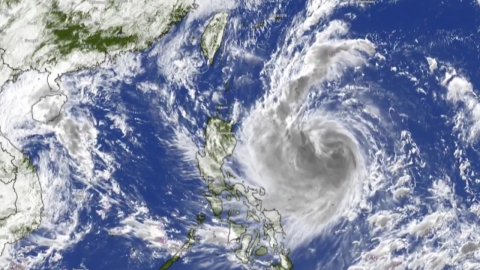Shall we look at the second question?
Autumn delicacy, it must be hard to see gizzard shad.
[Reporter]
There is an old saying that if you smell the gizzard, your daughter-in-law will return, so it is considered a delicacy in autumn.
These days, it is not easy to see gizzard shads at seafood markets or marts.
As a result, the price has more than doubled.
Recently, the price per kilogram of gizzard shad at Noryangjin Fish Market has jumped two to three times from last year to an average of 40,000 won.
There's even a new word called fish inflation, which is a compound word of fish and inflation.
If you listen to the merchants, there are times when they don't come in at all or a little, but they don't sell well because the price goes up.
Let's listen to the interview between the merchant and the client.
[Choi Woo-chang / Fish Market Store owner: It's too hard to sell because the supply has decreased by two-thirds. It's too expensive. The price has more than doubled compared to last year.
[Im Jiyoung / Gocheok-dong, Seoul: I used to eat gizzard shads a lot in fall, but I don't see them anymore. I don't think I can eat it because it's expensive.]As the price of gizzard shad in the fall
has jumped, both consumers and merchants are crying.Merchants who ruined the fall gizzard business
are selling yellowtail and oysters sold in the winter ahead of time.
[Anchor]
Is it because of the change in water temperature that makes it difficult to see gizzard shad?
[Reporter]
That's right.
The average sea temperature was 27℃ last month, which is 3.5℃ higher than the 23.5℃ average over the past decade.
Gizzard shad mainly lives at 15-21℃, but as the water temperature increased, they left in search of the cold sea.
If you look at the catch from January to August this year, it is 3,380 tons, which is 52% of the same period last year.
It's down by about half, 48%.
This is not just a case of autumn gizzard shad.
The catch of fish living in low-water temperatures such as blue crabs, squid, flounder, monkfish, and sheepfish has decreased.
Rockfish and sea bream, which are farmed, are also more likely to die due to rising sea temperatures.
On the other hand, fish that grow well in high water temperatures have increased their catch.
Shrimp is a representative, and tropical fish species are found in the South Sea.
As the water temperature changes, there are also major changes in fish species and catches caught in the sea in Korea.
※ 'Your report becomes news'
[Kakao Talk] YTN Search and Add Channel
[Phone] 02-398-8585
[Mail] social@ytn.co.kr
[Copyright holder (c) YTN Unauthorized reproduction, redistribution and use of AI data prohibited]
Economy
View the full list of articles- Up to 16 trillion won will be invested in the "30 trillion tax revenue funk"...a war of words in the National Audit Office
- Rumpiskin occurred at the dairy farm in Chungju, North Chungcheong Province...15th in the country
- Jeong Eui-sun and Akio "Mobility Future"...Lee Jaeyong also has a seat. [Anchor Report]
- "Autumn Gizzard" that went home in the heat...a fast-changing fishing environment [Anchor Report]




![[Site Y] Hong Kyung and Noh Yoon-seo 'Cheongseol'..."A story of pure love and warm growth".](https://image.ytn.co.kr/general/jpg/2024/1028/202410281722342590_h.jpg)
![[Focus Y] Hive Report Scandal, University Clubs Don't Leave Behind-the-scenes Talks](https://image.ytn.co.kr/general/jpg/2024/1028/202410281606501960_h.jpg)



